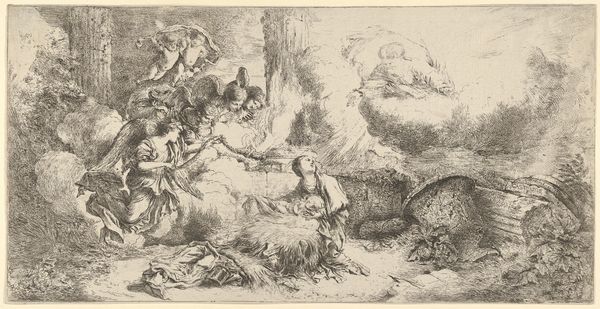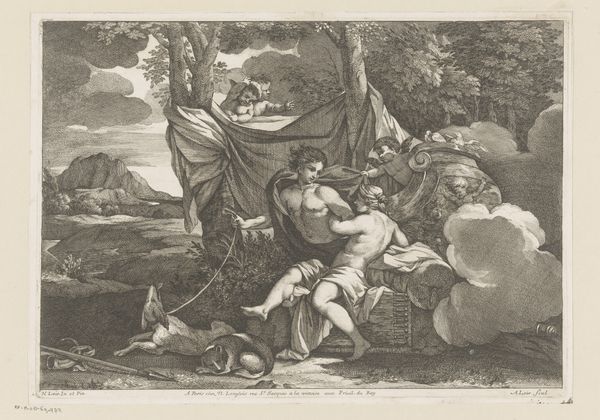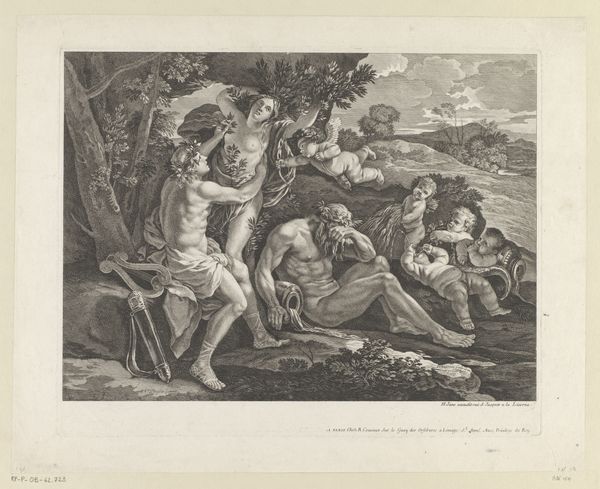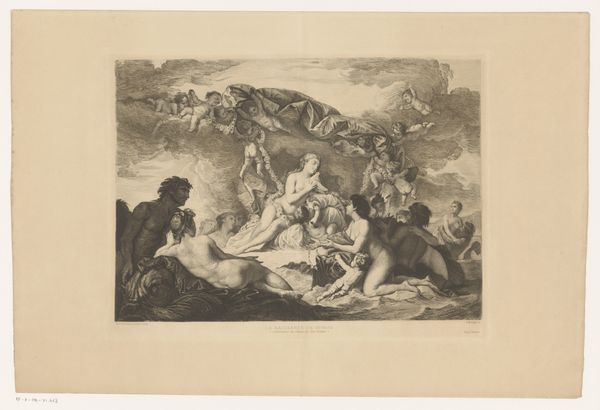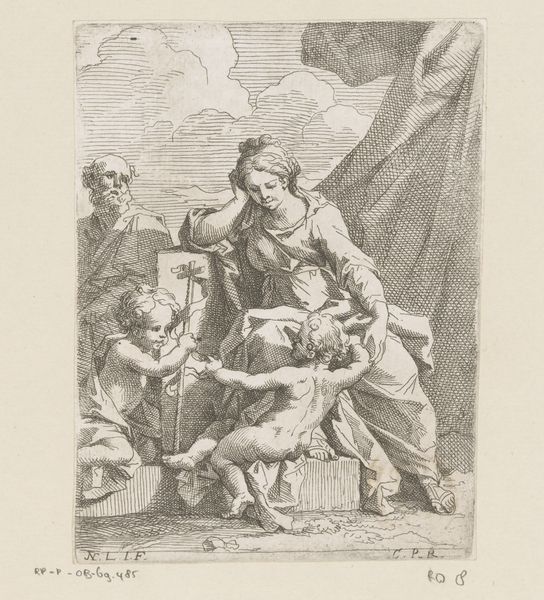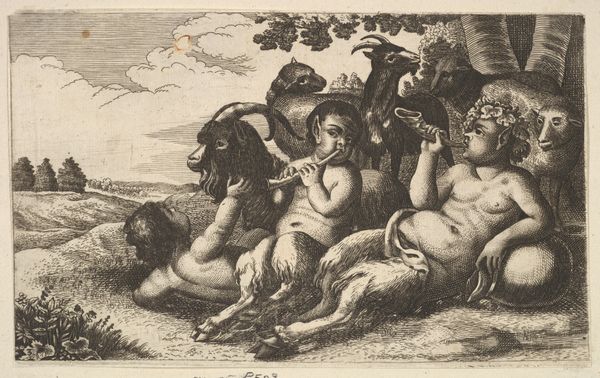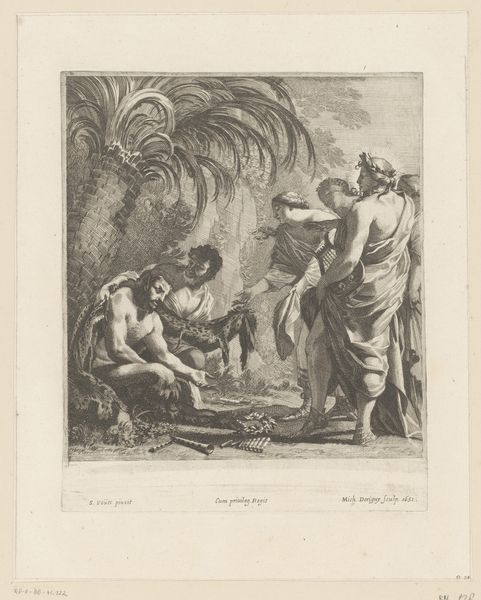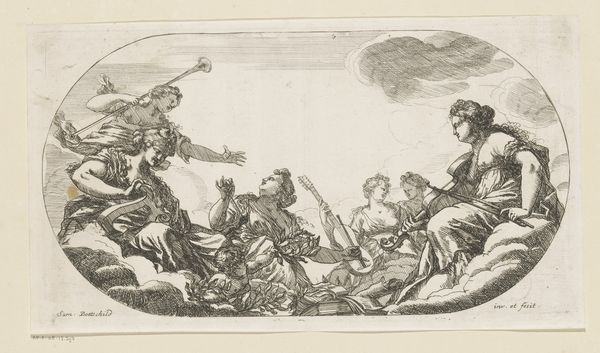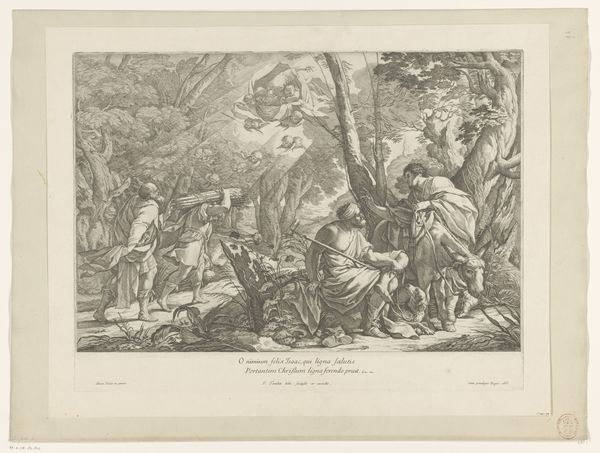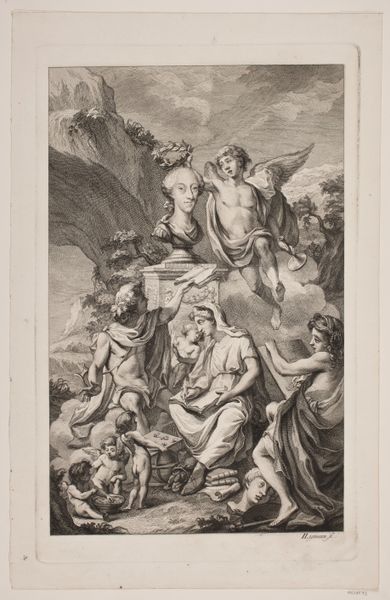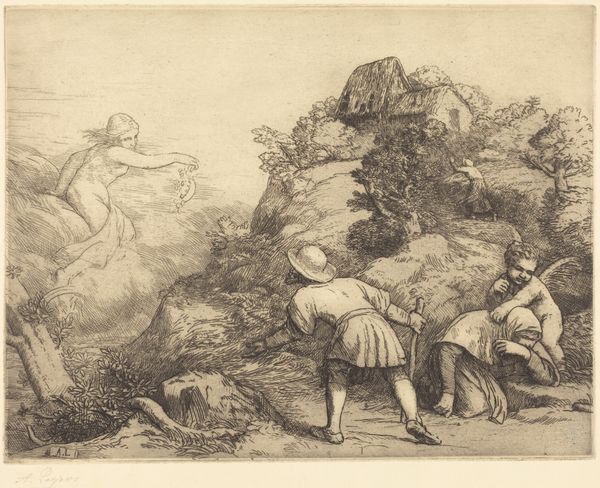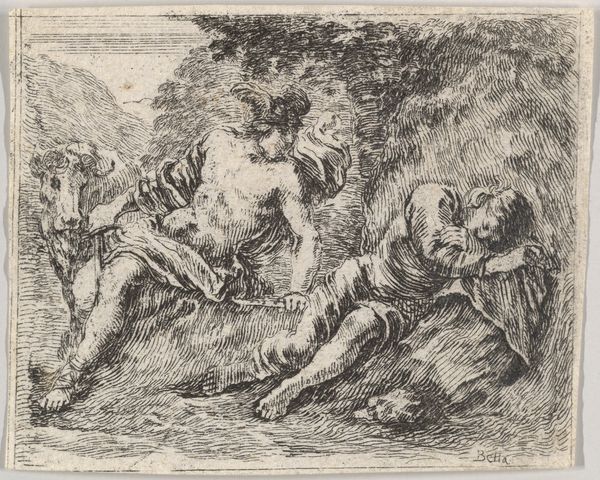
print, etching, engraving
#
baroque
# print
#
etching
#
figuration
#
history-painting
#
engraving
Dimensions: 4 15/16 x 6 1/4 in. (12.54 x 15.88 cm) (plate)5 1/2 x 7 5/8 in. (13.97 x 19.37 cm) (sheet)
Copyright: Public Domain
Curator: I’m immediately struck by the drama, the heightened tension radiating from this print. It almost feels operatic. Editor: Indeed. What we're looking at is an etching with engraving by Giovanni Battista Mengardi, circa the 18th century, titled "Abraham Sacrificing Isaac," found here at the Minneapolis Institute of Art. The very making of prints speaks to its time, before photography allowed mass reproduction of art. Consider how engravings democratized access to imagery. Curator: The detail achieved through the lines is fascinating. You can practically feel the weight of Abraham’s arm as he’s poised to strike, and the texture of the angel’s wings… All achieved through these minute marks. Editor: Absolutely, but consider the problematic nature of the narrative itself. It's an example of patriarchal power structures where blind faith trumps compassion. The complete erasure of Isaac's agency…it’s unsettling when viewed through a modern lens. Curator: Right, there's something disturbing, almost clinical, in the presentation. Abraham’s unwavering focus on the act of sacrifice… but the material craft complicates it. To render something so brutal with such intricate care, what does it reveal about the culture that valued both? Editor: It’s a visual paradox, isn't it? And, of course, such depictions reinforced hierarchies and normalized obedience to authority. How might alternative interpretations empower different audiences? For example, reading Isaac as resisting… even in his bound state. Curator: That resistance you describe is absent from the visual language Mengardi employed. The print is, at its core, an exercise in the power of faith. We’re drawn into a moment of extreme crisis rendered by technical precision. But you are right, the absence speaks volumes as well. Editor: Perhaps by unpacking those absences, by critically examining how such images shaped our understanding of faith, obedience, and sacrifice, we can create more space for inclusive dialogue. Curator: Exactly. By considering how the piece was fabricated and distributed—alongside its troubling implications—we gain a richer understanding of both its art-historical moment, and our present one. Editor: Thank you.
Comments
No comments
Be the first to comment and join the conversation on the ultimate creative platform.

